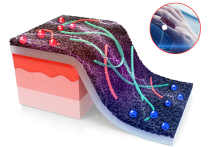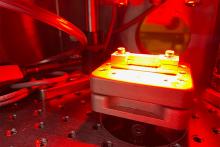Three faculty from Penn State’s College of Earth and Mineral Sciences (EMS) have been elected to the National Academy of Engineering
Penn State’s Sustainable Labs Program ushers participating labs through a yearlong certification process, guiding them in implementing sustainable practices across multiple domains, including energy efficiency, waste reduction, water conservation, green chemistry and sustainable purchasing. The program will host a virtual information session from 9:30 to 10:30 a.m. on Tuesday, Feb. 18, and from 11 a.m. to noon on Friday, Feb. 21, for those interested in learning more or applying for the next cohort.
John Mauro, Dorothy Pate Enright Professor of Materials Science and Engineering, has been named head of Penn State’s Department of Materials Science and Engineering, effective July 1. Mauro will succeed Susan Sinnott, who has served as the head of the department since 2015.
Photon-counting CT scanning is the next-generation of computer tomography diagnostics, providing precise, multi-color imaging to simultaneously track biological processes. The Laboratory for Materials in Medicine, led by Dipanjan Pan, the Dorothy Foehr Huck & J. Lloyd Huck Chair Professor in Nanomedicine and professor of materials science and engineering and of nuclear engineering at Penn State, is advancing the imaging capabilities by developing contrast agents to target specific molecules and processes that may reveal more about disease progression than traditional scans.
Lauren Zarzar, professor of chemistry and of materials science and engineering at Penn State, has been named a recipient of the 2025 Presidential Early Career Award for Scientists and Engineers (PECASE), one of three Penn Staters to receive the honor, as announced by the White House on Jan. 14.
A major challenge in self-powered wearable sensors for health care monitoring is distinguishing different signals when they occur at the same time. Researchers from Penn State and China’s Hebei University of Technology addressed this issue by uncovering a new property of a sensor material, enabling the team to develop a new type of flexible sensor that can accurately measure both temperature and physical strain simultaneously but separately to more precisely pinpoint various signals.







